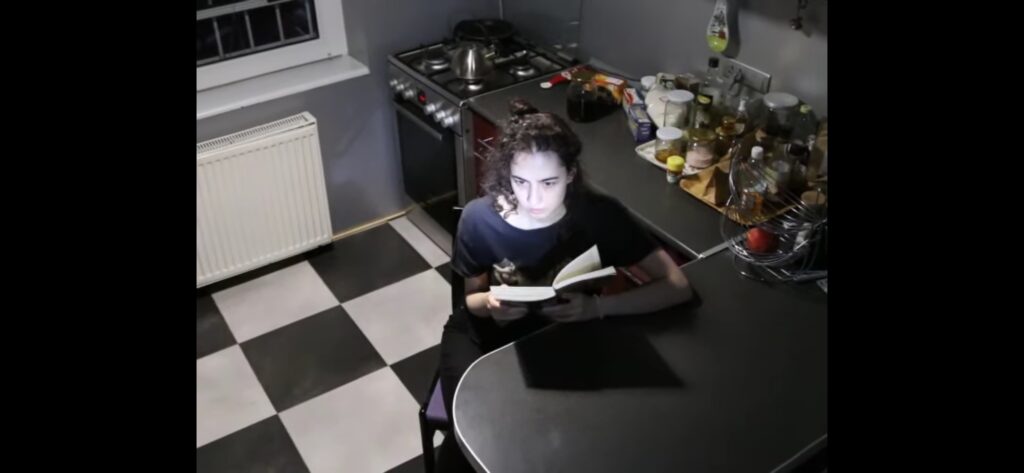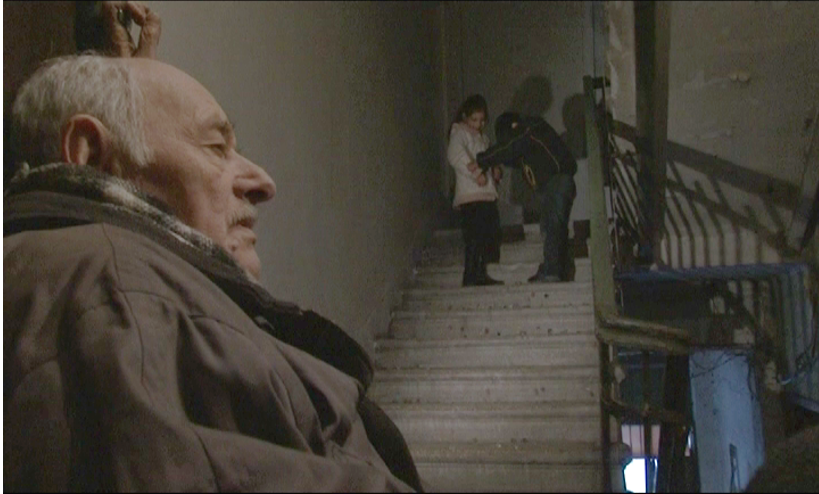“And God said: Let there be light: and there was light. And God saw the light, that it was good: and God divided the light from the darkness” (“Old Testament, Genesis”). The given quote from the Bible can be said to be one of the first symbolic metaphors of separation between light and darkness, day and night, as the embodiment of goodness, hope, faith, and, on the other hand, hopelessness, the unidentified. Although darkness does not directly acquire the meaning of absolute evil in the first chapter of the "Old Testament," it has become more a part of the divine order of the still unformed chaotic "world," however, darkness already clearly symbolizes evil and apostasy from God later in the biblical texts, while light embodies God himself, as well as truth and grace.
In Marta Urushadze’s psychological, “horror” short student film “Contact” (2021), which is full of elements of sub-genre, the traditional biblical symbolism of “light” and darkness is rejected and inverted (this may remind us of Mikheil Kobakhidze’s 1964 film, “The Wedding,” where the word “wedding,” synonymous with happiness and love, is given a tragic and ironic connotation), as it suits the aforementioned sub-genre. In this work, even “light,” the white light that physically appears from time to time in the life of the main character (Marta Urushadze), a young girl, with its essence and charge, is at a glance dark, godless, evil, confusing, and not a source of hope and relief. This idea and feeling in the viewer is also reinforced by completely dark and, as far as possible, depressing atmosphere of the film. It can even be said that since there is no dialogue or monologue at all in the work, it is entirely the merit of this atmosphere that the viewer can penetrate the psychological state of the main character. Thus, the director, in this case, entrusts the entire visual and technical side of the film with the task of conveying the main message and the heroine's distress and inner struggle, which is a special ability of cinema - to convey without words what other genres of art are less able to do.
The fragmentary dream-like, mystical events taking place in the film (between which, at a glance, there seems to be no logical connection) and also the confusingly non-linear plot, which is suitable for psychological horror is based on the main character’s feelings, memories emerging from the subconscious, fears and a severe emotional, spiritual crisis. Despite the fact that the technical side of the film is not ideal and certain shortcomings are noticeable (image quality, sound direction, dramaturgical point of view, chaos), the author still successfully brought to life on the screen, the unconscious state of the heroine transferred to reality using a moving subjective camera, non-standard angles, obscure, dark colors and tense music.
Often, completely ordinary things, dreams and small details of everyday life acquire a certain symbolic meaning in the human mind and in this way become embedded in the subconscious of the person, which then momentarily returns to the individual's memories. In this regard, several important details in the film have an interesting symbolic meaning, the decoding of which, to some extent, will help us understand the psychological state of the heroine and the essence of the plot as a whole. One such detail is the color red, or more specifically, the red flower, the first sharp color that appears in the work saturated with darkness and monotonous tones, and which associatively reminds the main character of a fragmentary image - a faceless woman in a red dress walking down the street, which can also be considered an archetype of the Jungian anima. The red flower and the woman in the dress from the past (the latter can be a fragment of the heroine's memory or a dream) seem to appear to us as parallel and interconnected symbols of each other, something that simultaneously attracts and even frightens the character. The intensity of the color and the woman's facelessness give this image a more archetypal charge, as if she is not a specific person, but a symbolic visual expression of feminine energy, desire, and danger.
One of the most intriguing visual details should be noted - an unidentified faceless man appearing on the monitor, observed by the main character. In this case, it should be said that the monitor acts as a kind of mirror, a mirror that reflects the truth not directly but symbolically, as is the nature of the subconscious. The viewer notices that the main character observes the reality of the “other” on the screen, although this “other” is actually the subconscious of this character himself and the “masculine” archetype locked in his inner world, the animus described by Jung (the unknown and, in many cases, rejected masculine side embedded in the female psyche). The stranger depicted on the screen is inaccessible, just like the “inner self” that is spiritually imprisoned for this character. Unknown, dangerous and incomprehensible for the protagonist is the darkest, unconscious side of himself, the so-called Jungian “shadow,” which this character considers to be a danger coming from outside, while this darkness is an integral part of his own soul and psyche. This archetype is directly presented in the film in the form of a real shadow, namely, the viewer witnesses how the shadow gradually covers and absorbs the violet flower. An interesting and important nuance is that in the next scene we can see the main character himself with a violet flower in his hand. That is why, it must be said with confidence, the knot is tied in the final part. Although it is a rather complicated story, the main idea is that throughout the film the viewer is actually witnessing the main character’s struggle with his own unconscious, therefore dangerous, unacceptable side, and the white light and symbolic fragments (the red flower, the unknown man and the faceless woman) are a means of the subconscious contacting this person. Accepting the unconscious shadow side is a painful process for people, especially when it requires separation from the pure and holy side (the metaphor for this is the delicate violet flower). This process is also a universal experience, and the breaking of the fourth wall by the main character at the end of the film highlights this.
The film has certain technical and dramaturgical failures but it should still be considered interesting, mainly because it contains elements of psychological horror, which Georgian cinema is really not spoiled with.
Nato Mtsariashvili






